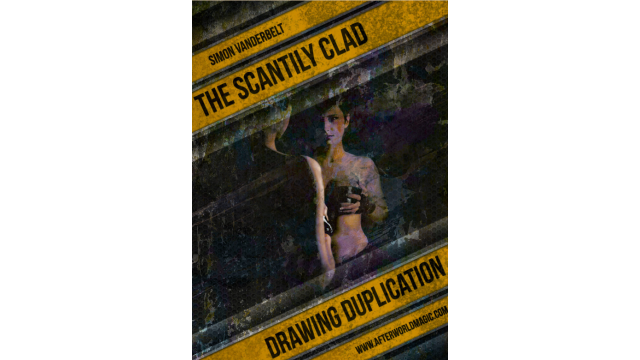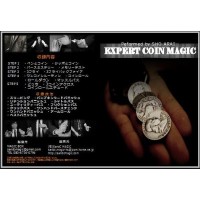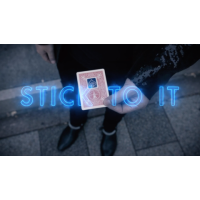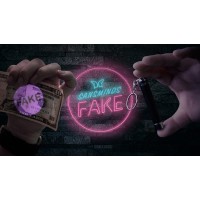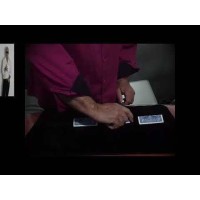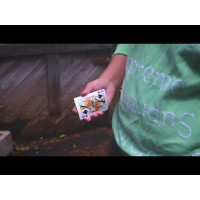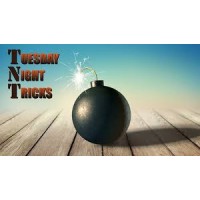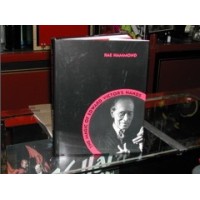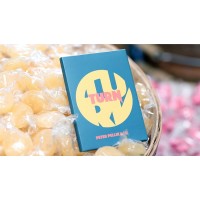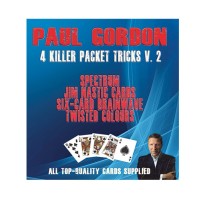The Scantily Clad Drawing Duplication by Simon Vanderbelt
- Product Code: C#10022
- Reward Points: 15
- Availability: In Stock
- $6.98
-
$3.99
- Price in reward points: 399
The Scantily Clad Drawing Duplication
Introduction
The chances are, as a working or amateur mentalist, you almost certainly have plenty of methods and presentations for a drawing duplication. So, why another drawing duplication effect? For those of you who know me, either personally or professionally (or both), will know I spend a lot of my performing time as a Psychic Entertainer, with shut-eye (or just curious) audiences. When performing for these audiences it's not just (if at all) about your amazing feats as a mind-reader, it's about taking them on a journey in which they can tap into their own latent abilities. They should enjoy an experience as being an integral part of the effect rather than just be someone who's had their mind read. With The Scantily Clad Drawing Duplication (which I'm going to refer to as TSCDD from now on), I hope I've created a real group experience for your audience. Everyone becomes part of the effect, taking part in the drawing duplication. A fair number of them will succeed too! You, as the mentalist, will of course, shine! It was this in mind that I created the methodologies that you've got in front of you now, a drawing duplication experience. I say methodologies because there's two versions of this effect, depending on how much control you want over the routine. Like you, I have a number of criteria for an effect to make its way into my repertoire. Firstly, for 'major effects' (as in the Bob Cassidy term), it needs to engage as many of the audience as possible. I think TSCDD definitely achieves this with the added bonus of being able to be scaled down to a much more 'minor effect'. Secondly, it should really engage the audience, make them part of the magic. It certainly achieves this. Finally, if I perform an effect on stage, I need to be able to recreate it closeup and vice-versa. Even if the method changes, the effect for the audience should be identical. I've cringed at mentalists unable to recreate something they did on stage just 30 minutes prior just because they didn't have their 'special' A3 drawing boards! TSCDD works equally well for stage, parlour or close-up, I myself perform this in all three environments. You could use the same methods for either, or even change them up if you so wished.
Finally, the presentation. This is what convinced me to release this effect. Prior to using the presentation you have before you, I ran this purely as a 'psychic experiment' as part of psychic parties or stage demos. There's nothing stopping you doing so either, if that's how you roll, but what you have here is something that could fit into many more repertoires, regardless of what flavour of mentalism you perform. Right then, without further ado, let's get on with the effect. When describing the effect and indeed method, I've done so from a parlour perspective. You won't need to do any hard work to translate this into stage or close-up etc. For the most part, if anything changes perhaps the size of the props. Back to Ryman's it is then! Simon Vanderbelt November 2012
The Effect
There's been a tremendous amount of research into psychic phenomena and ESP over the years, some of it quite good and some, if we're honest, rather shoddy. Regardless of the research though, some interesting features do seem to be consistent throughout. The most significant of which, in my opinion, is the idea that the more creative the subject matter, the better the results, particularly with those who claim to have no psychic ability. Numbers and simple words don't seem to be able to be 'transferred' as well as more creative things as music or pictures. It's with that in mind that I propose our next experiment. I'd like to see how we do when tasked with drawing a picture that one of us draws in secret. To make sure it's a random drawing, our artist isn't going to have a choice in what they draw, they'll pick something at random. Don't worry, it's not as crazy as it sounds. What I want to see tonight, is if we can actually pick up, subconsciously, the image our artist is going to be sending out to us. Now, I do this for a living and you guys don't, but I'm pretty sure some of you are going to surprise yourself with just how well you do with this. The mentalist produces (by that I mean, takes out of his pocket, not some mad fire wallet production) a pile of business cards and his trusty Sharpie (which he has playfully named Charles). First of all then, we need some words, any words will do, something for our would-be artist to scribble. Just shout them out, let's begin with you. The mentalist notes down the first participant's suggestion, 'Drum Kit', on one of the business cards and so on until everyone has suggested a word or he runs out of business cards. Excellent, some brilliant suggestions there, I knew you were going to be a good crowd to try this with. OK, so now we need an artist, who fancies themselves to be our scribbler? I say scribbler and I mean it, you really don't
need to be any good at art to do this, I'm fairly certain you'll be better than me, I can barely manage a simple stick man! The mentalist finds his volunteer (her name is Stacy) and offers the pile of suggestions to her, to take one at random. He also gives her a paper and pen to draw with. If you'd like to sit yourself over here and I'll get out of your way and you get scribbling at whatever it is you've chosen at random. While the artist is busy, the mentalist hands out paper and pens to the rest of the audience before finally returning to the volunteer, making sure he doesn't see the picture in question. All done? Brilliant, good work. Now, making sure that neither myself nor anyone else gets a glimpse can you fold up your paper so it's well hidden. Excellent, thanks. Actually, why don't you sit on it too, just to make sure! Now what I want you to do is simply concentrate on that picture you've just drawn. Imagine yourself seeing that word written down again, imagine yourself drawing it again, over and over in your mind. You can close your eyes if that helps. That ok? Brilliant! The mentalist takes up his own paper and Charles (the Sharpie) and turns to instruct the audience. OK guys, here's what we're going to do. We're going to try and pick up on Stacy's inner thoughts. Think of it as latching on to that replay she's going through in her mind right now. If the idea seems a bit daunting, and it probably does, don't worry, just go with it. Relax, imagine you really could do it, just dip into her mind, what would you see? Go with whatever comes naturally, don't overthink it. When you're done, either fold up your picture or just place it face down on your lap. The mentalist begins to draw a picture also, hidden from the rest of the audience and Stacy and waits for everyone else to finish after he's done. All done? Good stuff. How did that feel for everyone? A bit weird? Complete nonsense? Anyone get a strong feeling about what the picture was straight away?
The mentalist acknowledges the audience's experiences before turning back to Stacy. OK Stacy, I think it's time you put us out of our misery, can you show us all your picture, just hold it up for us and perhaps say out loud what it is you drew. You know, in case it's not entirely obvious! Stacy dutifully reveals her picture and announces that it is a giraffe (which is probably a bit obvious to everyone present. I mean, what can you mistake a giraffe for?). Good job! Thank you very much Stacy, if you could just remain seated there for the time being, thanks ever so much. The mentalist turns his attention back to his audience. So, how did we all do, anyone get it right? I'm assuming from some of the gasps and shrieks of delight a few of you did! A fair proportion of the audience acknowledge that they did in fact correctly 'divine' Stacy's giraffe, some are more accurate than others but are still unmistakably giraffes (I mean, what can you mistake a giraffe for?). Others explain that they initially thought giraffe but dismissed it for a variety of reasons. At least one spectator displays their picture of a cow which they claim looks alarmingly like Stacy's giraffe, explaining they were obviously picking up on some parts of the picture but not others (apparently, you can mistake a giraffe for a cow). The mentalist takes time to discuss the experience with the audience, congratulating everyone on a good effort before bashfully taking his own picture and displaying a giraffe. Thanks very much for trying with me folks, especially well done to those of you who got it right, better luck next time for those who didn't. And an extra special thanks to Stacy who deserves a big round of applause! The mentalist returns Stacy to her seat, thanking her once again before producing five polystyrene cups....... (no, not really).
The Scantily Clad Method
In terms of materials/props, you can use whatever you can lay your hands on. I prefer to use business cards, blank or my own, but you can use just about anything. When performing close-up, I always, without fail, use my business cards for the audience to draw their duplications on as they'll be something they take home with them and stick on their fridge (well, if they got it right). Free advertising, even if it's on someone's fridge, never knock it. For the most part, in terms of method, what you read is how it really plays out. Make your introduction to the effect in your own beautiful style, taking out your pile of business cards just before you have people shout out suggestions. I always have them shout them out for a number of reasons; it's quicker and as we'll see later, helps with some of the people getting their duplications right. So, how do you determine the card selected at random? Yes, it's mnemonics. Now, I'm not going to go into a full and deep discussion of mnemonics with you, partly because it's 1am but mostly because there's better people than I in this field. And really, I truly believe it's a skill every mentalist ought to be at least remotely competent in. That said, I will outline the system that can be used for this effect, I'm fairly certain you'll be familiar with it anyway. It's called Linking. In essence you take your first word, 'Drum Kit' and link it to the second 'Frog' and then that to the third 'Lighthouse' and so on and so forth. What you'll do is create a story in your mind with these links. So with that example, I'd imagine a drum kit, which a frog then sits down at and begins to play. The scene pans out (all movie style) and I see he's in a lighthouse. You get the idea, right? Do this really visually, genuinely picture the story in your mind, even narrating it to yourself (I find that helps get the order well and truly firm in my mind). The more insane the story, the better, it sticks in your mind much more than something that could actually happen in real life. No, frogs can't play the drums in real life. As with any 'naked' mentalism skill, it takes practice but it's a lot easier than it might sound at first.
So, while writing down each suggestion, you're creating your linking story. Each card then goes to the back of the stack until it's exhausted or you've got enough suggestions. I find about a dozen is ideal for this effect so I have a stack of 12 cards ready to go. If you're working from a bigger stack and are happy with the amount of suggestions you've received, simply discard any blank cards back to your pocket. You now have a stack of genuinely random words, freely chosen, in a memorised order with hardly any effort! Simply false shuffle, or just cut them and fan them out for your artist volunteer to choose from, cutting the stack at their selection, moving the top section above the cut to the bottom of the stack. All is left to do is take your peek of the bottom of the stack. For God's sake, don't make an issue of it, you've got plenty of time. The only card of importance, as far as your audience is concerned is the one on the spectators hands, they won't care about the rest of them in yours. Casually place the cards face up on a table, even turn them over in your hand as you square them up to go into your pocket for Charles (or whatever you've named your Sharpie). Whatever you do, don't make an issue of it. So now our bottom card is peeked and it's 'lighthouse'. From my linking story I know the next card, the volunteer's chosen card, is 'Giraffe'. Why? Because that frog in the lighthouse had a pet giraffe tied up outside his lighthouse, just like a cowboy tethers his horse outside the saloon. So, just to recap where we're at. We have a volunteer with a drawing of a known (to you) object or abstract. We know we're going to be able to draw the same thing as our volunteer, but what about our audience? How are they going to know? Well, the hard and fast fact is, they're not, they're going to guess. As a mentalist though we can try and help them as best we can and 'massage' the hit rate amongst your audience. Firstly, you are, by chance going to have people hit the nail on the head. Brilliant! Over time, with a group of around 12 on average (you can do this for hundreds, everyone can play, not just those who make a suggestion) about 3 or 4 will get it right, sometimes as many as 6. We'll call that a hit rate of 25% on average. Now, I genuinely don't know the stats but I'll pretend I do when it comes to my audience, congratulating them on how well they've
done. Well, I will, not yet though, there's more hits to be discovered. At least another 3 or 4 will 'claim' to have thought of giraffe but changed their mind. They deserve congratulating too; Well done, it was the first thought in your head but obviously you've over-thought it and gone with something else when really you should've just gone with your initial thought. Don't worry, that's really well done and you'll know to trust your instinct next time. Of course, nobody said it was the first thought in their head, they might've thought 'giraffe' after drawing a mobile phone. Do we care? Not one bit. And so, voila, that's a hit rate of 50% and without being a statistician, I know that's well above the odds of normal probability. Finally we have the psychic entertainer's favourite audience member, the one who pulls a hit from absolutely nothing, these come right from the pavilion end, you'll never see them coming. But hey, go with it! Typical examples are someone who drew a car instead of a motorbike
Reviews (0)
Related Products
Snap by Peter Turner
Peter Turner - SnapPDFIf you are looking for stunning, practical and direct drawing duplications thi..
$2.99 $6.68
Alakazam Academy: Revealing Mentalism by Chris Rawlins
"Chris Rawlins has a rarely seen authenticity and realism, an important contributor to our art" ..
$2.99 $5.99
Nebulous By Perna
This is the third book in a compendium of books that Perna has for you.This is material that has bee..
$23.99 $120.00
Recommend
Stick To It by Shahrul Nizar
No Gimmicks.One of the most crucial ways to make card magic strong, is to ensure your spectator u..
$1.99 $8.99
Cooldown Change by Saysevent
The simple cool card change make it your self fun. - Easy to do. - Impromptu. - Clean up..
$0.99 $3.98
The Memory Arts - Expansion Pack 5 by Sarah And David Trustman
This new expansion pack is the most versatile yet. Many of you have asked for a PDF of all 52..
$1.99 $4.99
Sansminds Worker's Collection Fake
What separates a hobbyist from a professional magician? It's not in the tricks, but instead in ..
$4.99 $7.99
Picasso by Salvador Molano Olivera
picasso the magician shows a mallet of red back, gives to choose freely two cards that shows..
$2.99 $5.99
Automation by Salvador Molano Olivera
automationtwo white cards and a black face card are changed position in repeated movements, the spec..
$4.99 $7.98
Three New Effects by Rich Li Tralier
Three New Effects - Crazy Color Change - Four Cards Production - Time Travel..
$2.99 $5.99
Tnt (Tuesday Night Tricks) Season 6 by Reel Magic Magazine
Reel Magic Magazine - TNT (Tuesday Night Tricks) Season 6 TNT: Season 6 ”The Scottish Ope..
$2.99 $5.99
The Magic Of Edward Victor's Hands by Rae Hammond
Edward Victor was one of the greatest magicians who ever lived, who affected the work of almost e..
$9.99 $12.99
The Working Mentalist's Book Test by Preston And Brignall
Right out of the acts of two popular working performers - Jamie Preston from New Zealand and Paul..
$1.99 $4.99
Turn by Peter Pellikaan
TURN is just one of those tricks you have to see. So, stop what you're doing and watch the quick ..
$2.99 $5.99
Teach The Art Of Magic by Penn & Teller
LESSON PLAN 01 Meet Penn & Teller Meet your new instructors: Emm..
$11.99 $13.99
4 Killer Packet Tricks Vol. 2 by Paul Gordon
Back in print for the first time in years, and now on Bicycle stock! Spectrum, Jim Nastic Card..
$11.99 $13.99
4 Killer Packet Tricks Vol. 1 by Paul Gordon
instructions download only now Back in print for the first time in ten years, and now on Bic..
$11.99 $13.99

